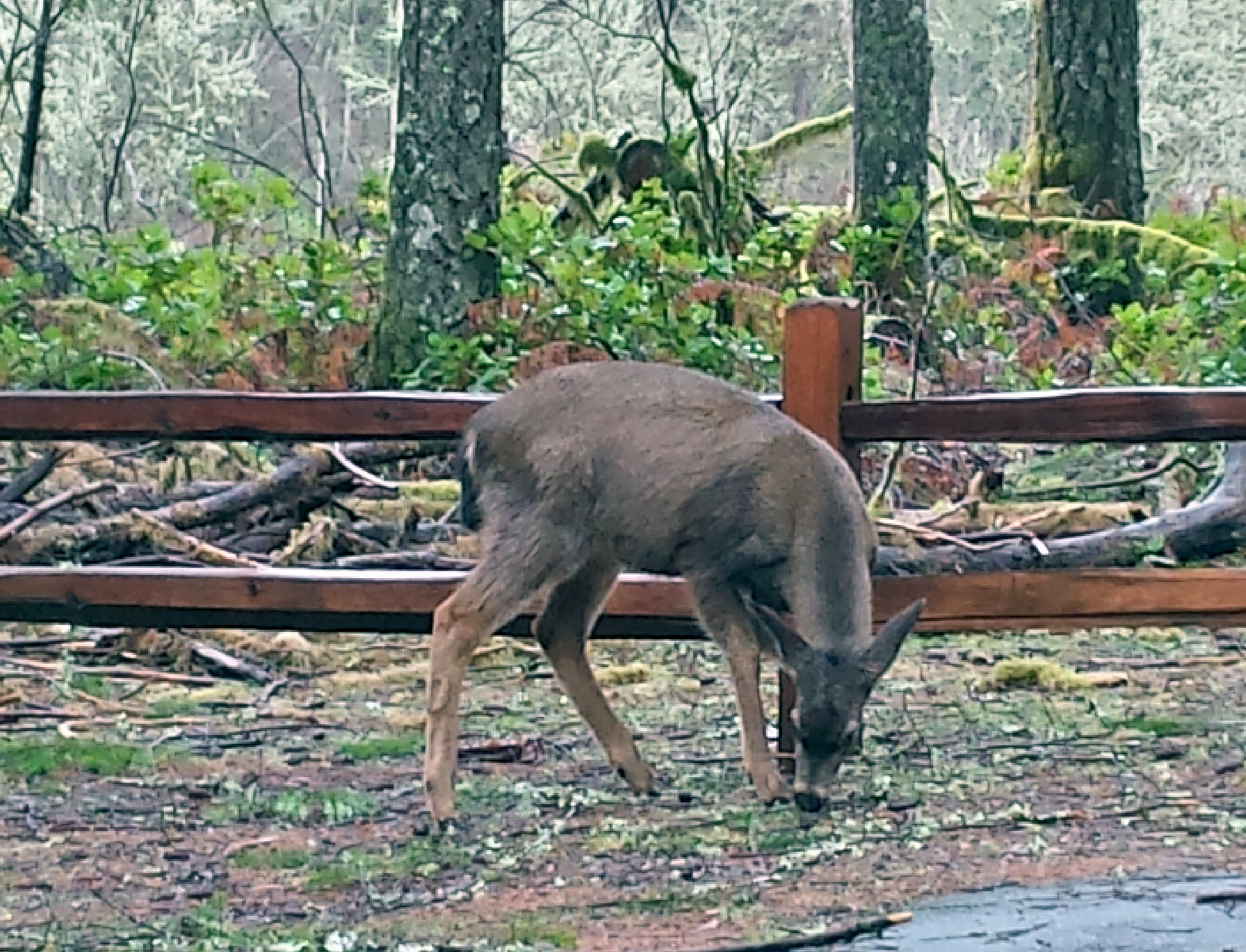
Having moved from the east coast and a state in which the ungulate (hoofed animals) population was limited to small white-tailed deer and smaller white-tailed deer (i.e. Key deer), I was thrilled to discover that Oregon has a boat-load of ungulates of varying shapes and sizes. There are eight – holy cow! – eight different ungulates hoofing it around the fields, forests, mountains and deserts of this great state. In fact, of all the large mammals that roam this state, only two of them – the black bear and the cougar – are not ungulates. That said, some species of ungulates are divided into subspecies, which makes it a little tricky to tell them apart.
Once during the first few months I was in Oregon, I mentioned to someone that I had seen a mule deer on a trail in the Willamette Valley. “A mule deer, you say? I think you mean a black-tailed deer,” they replied. Hmmmm….my field guide says they are the same thing. It’s right there in black and white: Mule deer, “black-tailed deer”, Odocoileus hemionus. WRONG! At one time, they were considered completely separate species. Nowadays the black-tailed deer is classified as a subspecies of the mule deer, and although they have some traits in common, they are distinguished by both physical characteristics and geography (most of the time – though they sometimes interbreed).
Both black-tailed and mule deer have large ears that move independently and almost constantly – earning them their common name – mule deer. Like most deer, both are browsers – meaning they prefer to nibble on shrubs and trees rather than graze on grasses. They have a stiff-legged, bounding gait, but don’t mind taking a swim either. Summer finds does hanging out only with their fawns while winter brings them together in herds.
The larger Mule deer (Odocoileus hemionus hemionus) ranges primarily east of the Cascades, in open areas of sagebrush and desert, as well as high, steep mountains. They will migrate up and down elevation to avoid deep snow and locate food. Mule deer have a light rump with a black-tipped tail.
The smaller Black-tailed deer (Odocoileus hemionus columbianus) subspecies (sometimes also called the Columbia black-tailed deer) ranges west of the Cascades and prefers more forested areas, though they have also adapted to the open farmlands of the Willamette Valley. They are darker in color than the larger mule deer and have an all black tail. Black-tailed deer are historically connected to naturally occurring wildfires which open up space and produce new grasses, brush and forbs for food. These days, they will also search out logging clear cuts which produces similar results in food.
On a recent visit to Oxbow Regional Park near Troutdale and west of the Cascades, I was lucky enough to get a close up view of several black-tailed deer. One buck ran across the trail in front of us, then a group of four were browsing along a high bank above the Sandy River. These deer were obviously acclimated to people, displaying no fear. It gave me a chance to observe them for some time.

Their dark gray fur was thick and fuzzy for winter warmth. Their dark eyes and large ears were ringed with white. The darker gray fawns stuck close to their mothers, huge mule-like ears dwarfing their tiny faces. They nibbled their way through winter-bare shrubs, nipping tips of branches and occasionally munching a mushroom or lichen. Eating their way along the river bank, they ended up in the parking lot among signs and fences, obviously at home among human artifacts.

Oh, by the way, the other Oregon ungulates are: Rocky Mountain elk, Roosevelt elk, Bighorn sheep, Mountain goat, Columbian white-tailed deer, and pronghorn antelope.
Have you seen mule deer or black-tailed deer in Oregon? If so, where?
References: ODFW document on Large Mammals Audubon Field Guide to the Pacific Northwest Audubon Nature Guide to Western Forests The Northwest Nature Guide by James Luther Davis














































![Air gun 101: The differences between .177 & .22 – Which jobs they do best ? [Infographic]](https://airgunmaniac.com/wp-content/uploads/2020/09/g44-150x150.jpg)
